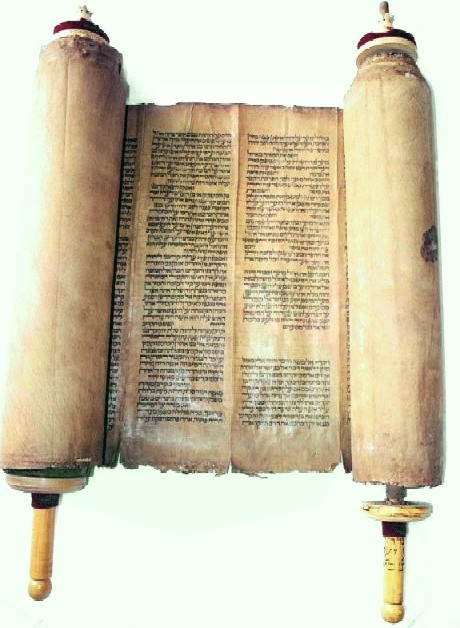Lessico
Torah

The extraordinary story pertaining to this Sefer Torah is that it was written and used in Spain for 300 years prior to the Spanish Inquisition in 1492, it is believed that it was then taken with the Sephardic Jewish refugees with them when they resettled on the Island of Rhodes in the Aegean Sea. One of the oldest Sefer Torah scrolls in the world was publicly displayed for the first time in the United States at the Sephardic Temple Tifereth Israel on Sunday, September 21, 2003. The opportunity to see the ancient scroll attracted hundreds of people, including many Sephardic Jews, whose ancestors were from the Island of Rhodes.
Torah in ebraico significa direttiva impartita con autoritą, quindi norma, legge. Nel giudaismo la Torah č la legge divina quale si trova codificata nei testi sacri. La sua osservanza č pertanto l'atto religioso fondamentale dei Giudei.
La Torah, tradizionalmente in forma di rotolo di pergamena da leggere nella sinagoga, č composta per antonomasia dal Pentateuco, cioč dai cinque libri di Mosč: Genesi, Esodo, Levitico, Numeri e Deuteronomio, ed č il fondamento della religione e della legge ebraiche. La tradizione che vuole il Pentateuco opera di Mosč risale al sec. II aC ed č generalmente accettata all'epoca del Nuovo Testamento e della letteratura rabbinica pił antica.
I rotoli, considerati sacri, sono oggetto di culto. Ogni sinagoga ne conserva molti, ciascuno protetto da una copertina di materiale prezioso e decorata in argento. Una speciale festa in onore della Torah, nota come Simhath Torah - Gioia della Legge - viene celebrata nella sinagoga con canti e danze.

Simchat Torah
The words 'Simcath Torah' mean 'rejoicing in the law'. This is the annual celebration when we read the last part of Deuteronomy (5th book of the Torah) and the first part of Genesis (1st book of the Torah). Our Torah reading cycle has been completed and re-begun. Simchat Torah is a very joyful occasion. The scrolls are taken from the Ark and paraded round the synagogue 7 times - often accompanied by flag waving, dancing and even a L'chayim (drink) or two. In some communities the end of the scroll is read by the Chatan Torah (bridegroom of the Torah) and the beginning is read by the Chatan Bereshit (bridegroom of Genesis). It is customary for the children of the community to come on to the bimah during the Simchat Torah service to have a tallit spread above their heads and receive a special blessing.